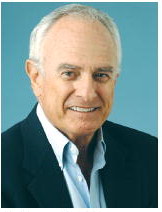Smith


Loran
Spring Practice
With football being a year-round enterprise, spring practice has always been a focal point to recharge the emotions for the forthcoming summer when the game’s aficionados ready themselves for the rapture of the fall. Even with shortened practices, by rule, and restrictions on contact, coaches give spring drills the highest of priority. With COVID 19 forcing a cancellation of spring practice a year ago, coaches loudly lamented the loss of this critical teaching period.
Spring football is confined to a portion of March and April today, but the term was a debilitating misnomer yesteryear. Off-season scrimmaging took place from mid-January until classes ended in early June.
When Tennessee upset Oklahoma, 17-0 in Miami on New Year’s Day, 1939—a game that is said to have “made” the Orange Bowl, Volunteer coach, Gen. Robert Neyland told his victors that he was “damn well pleased with the result.” Then he added, “Be ready for spring practice, Jan 15.”
A similar scenario would come about following the Orange Bowl game of 1942 when Georgia slammed TCU, 40-26. The small community of Athens was smitten with the success of the Bulldog team. Everybody was in a celebratory mood, including the conquering heroes returning home from Miami.
The week after the big game, Georgia’s first ever bowl trip, there was a note on a bulletin board that read, “Spring practice starts next week.” Frank Sinkwich, who had gained a record 365 yards of total offense against the Horned Frogs, turned on his heels as soon as he saw that note and exclaimed, “Not me.” He gave up football. Fortunately, he came back, won the Heisman Trophy and led the team to the Rose Bowl which the Bulldogs won, 9-0, over UCLA.
Long and enduring scrimmages were as much a part of the game in those days as the goalposts. That would continue deep into the 21st Century.
Coaches get more done in less time now, and players don’t have to experience the drudgery of constant scrimmage contact on the field. Today, the game is much more about speed, quickness and agility. Athletes coming out of high school today showcase remarkable skills.
Even watching from 60th row of the original section of Sanford Stadium, one was amazed at the skill level which took place on the field on Saturday, April 17, between the hedges.
The speed of the game is encroaching on the implausible. Inconceivable. While that sometimes makes the fallout from collisions that bring about apprehension and worry, it also allows for the showcasing of sensational and remarkable talent.
It didn’t take long for unseasoned observers to take note that freshmen like quarterback Brock Vandagriff have the skills to ignite an offense. There is much learning to do in his case, but he will turn heads one day where Tanyard Creek flows underneath his swift feet.
My guess is that someday when you google his name, it won’t have a red line under it. He will have become part of our continued from page
culture. I like his verve, his anticipatory skills and his commitment to playing the game, but what is most encouraging is that he is one of several quarterbacks, all of whom bring something to the table.
There are seasoned veterans and youthful aspirants. They are capable, healthy, motivated and extremely well coached. However, there never are any guarantees and there is always challenge. The competition has comparable talent. After all, this is the Southeastern Conference. Sometimes when the talent is equal, the intangibles become difference makers. Let’s hope the Dawgs have plenty of that. The first game versus Clemson brings about the most interesting opener in years. Win it and you are not assured of a position in the playoffs, but lose it and you will have to run the table to reach your objectives.
Clairvoyant I am not, but given the amount of talent, it inspires the populace. Georgia has a collection of fine football players.








